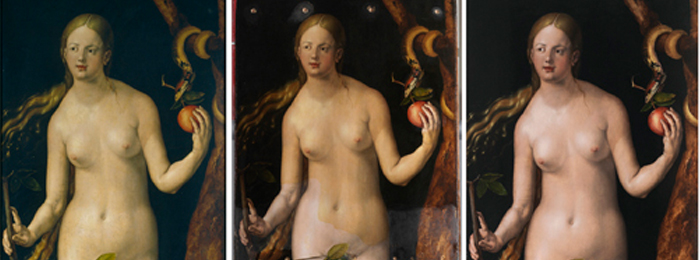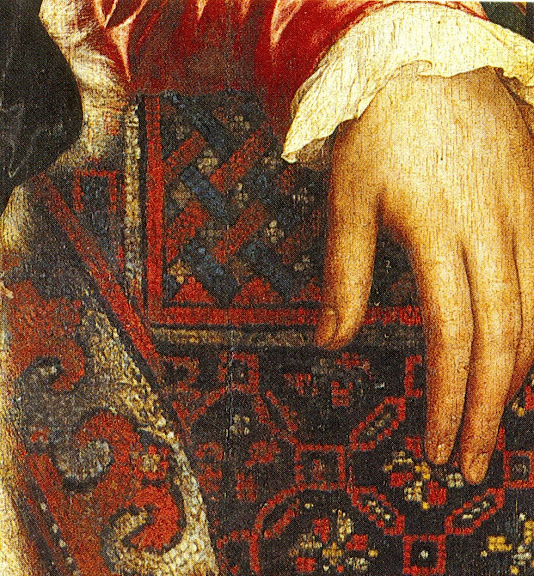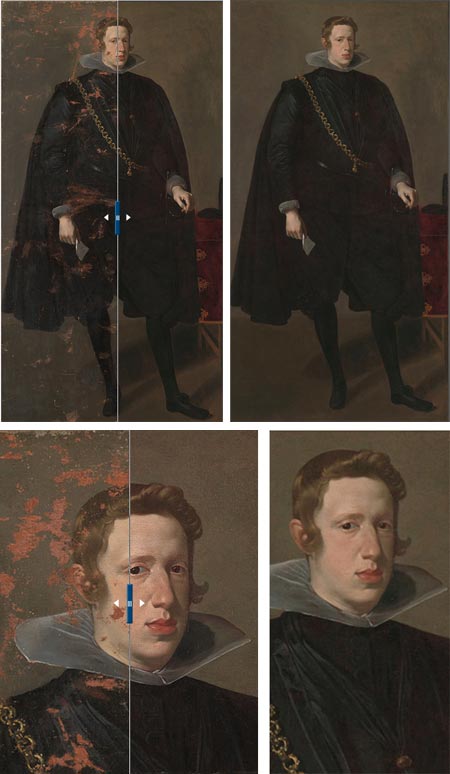On 29 Jun, 2015 With
The Restoration of Adam and Eve by Dürer Documentation exists on the restorations undertaken on the paintings since the 18th century when they were in the Spanish royal collection. Having entered the Prado in 1827, they were restored in the mid-19th century and it is recorded that further work was undertaken on the Adam in the 20th century, when a cradle was attached to the back. The accumulation of these interventions ultimately resulted in a harsh, flat image that lacked the original enamelled effect achieved by the artist. Thick layers of dirt, oxidised varnishes and areas of repainting that had darkened over time covered the paint surfaces, concealing Dürer’s brushstrokes and original colouring. These old restorations also affected the panels…
Read More
On 21 Apr, 2012 With
The controversial Restoration of Holbein’s “Ambassadors” The Early Music pioneer (Sir) John Eliot Gardiner recently left the Daily Telegraph’s music critic, Ivan Hewett, reeling with incredulity by saying that he had not seen himself as a crusading musicological force but simply as a jobbing musician who recognised that “other views are valid, as long as they’re convincing in performance”. For Hewett, Gardiner had long epitomised the radical movement to “scrape the varnish” off music by playing on obsolete period instruments and eschewing later styles and types of musical understanding in attempt to produce historically authentic performances. For over half a century after the Second World War picture restorers at the National Gallery, London, sought to recover the historically authentic appearances of paintings by first removing…
Read More
On 19 Apr, 2012 With
The Controversial Restoration of Michelangelo’s Sistine Chapel Ceiling No single proof of a restoration-induced injury to a work of art could be clearer than the photograph shown here (Fig. 1) of a section of Michelangelo’s Sistine Chapel ceiling frescoes. It was taken after the last restoration and shows in its centre section a repair made in 1566 by the painter Domenico Carnevale when a section of Michelangelo’s fresco fell away during settlement of the building (see Fig. 2 diagram). Carnevale had re-plastered the loss and, while the plaster surface was still wet, faithfully painted it to match Michelangelo’s (then) surrounding colours and tones. The repair was a good one and for centuries it remained almost invisible (see Figs….
Read More
On 2 Feb, 2012 With
The Restoration of a Velázquez In 1973, for reasons still not clear to me, the Metropolitan Museum of Art in New York undertook a sweeping reassessment of many of its holdings, resulting in the downgrading of 300 old master paintings from attribution to the master to attribution to “workshop of”, “circle of” or “follower of”, removing them from the canon of those masters’ works and significantly depleting the value of the museum’s collection. Some of those pieces have been again reassessed, both in the light of continued scholarship and as the result of subsequent cleanings and restorations. Last year the Met cleaned and restored Velázquez’s Portrait of a Man, and in the process restored it to it’s original attribution — originating…
Read More





